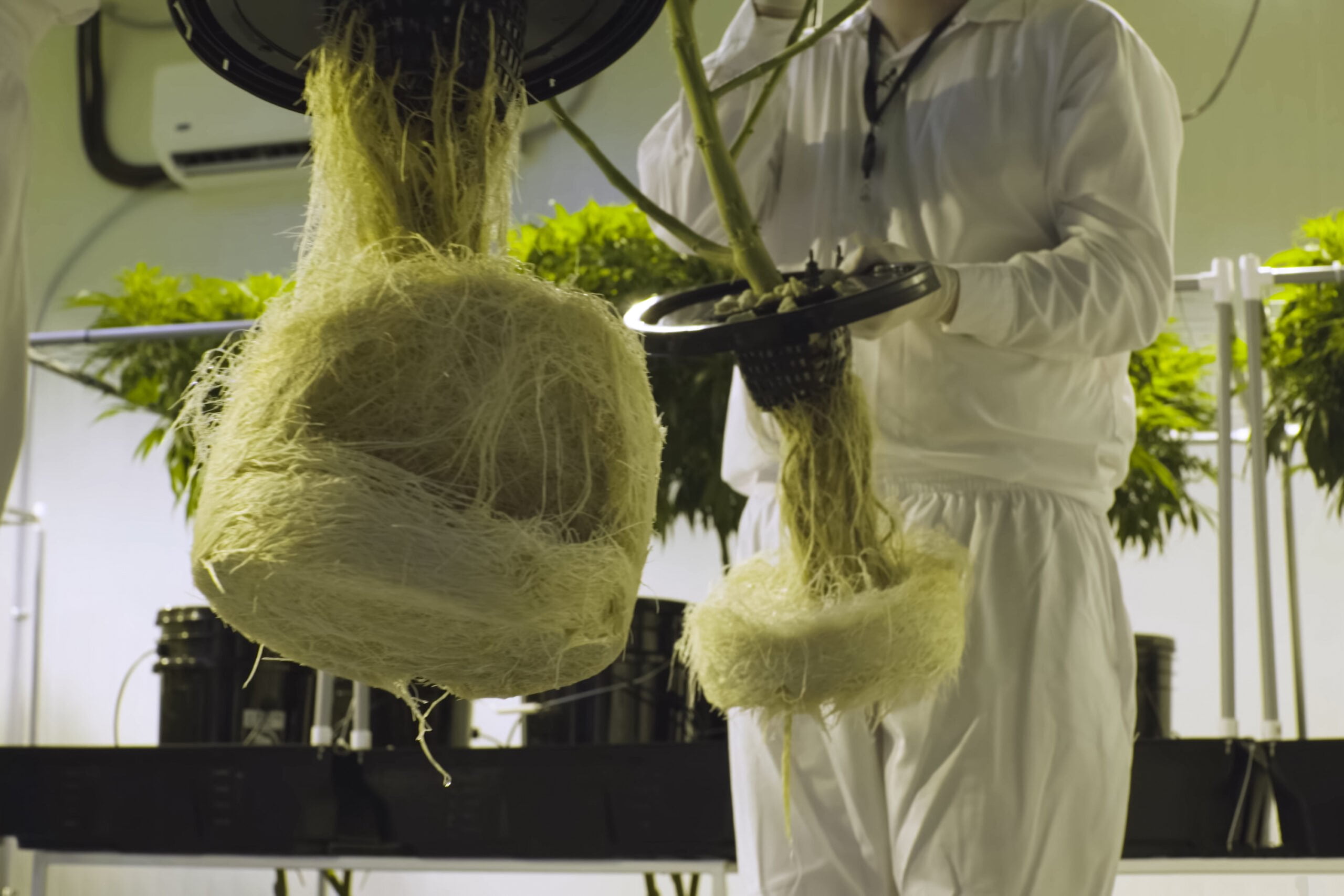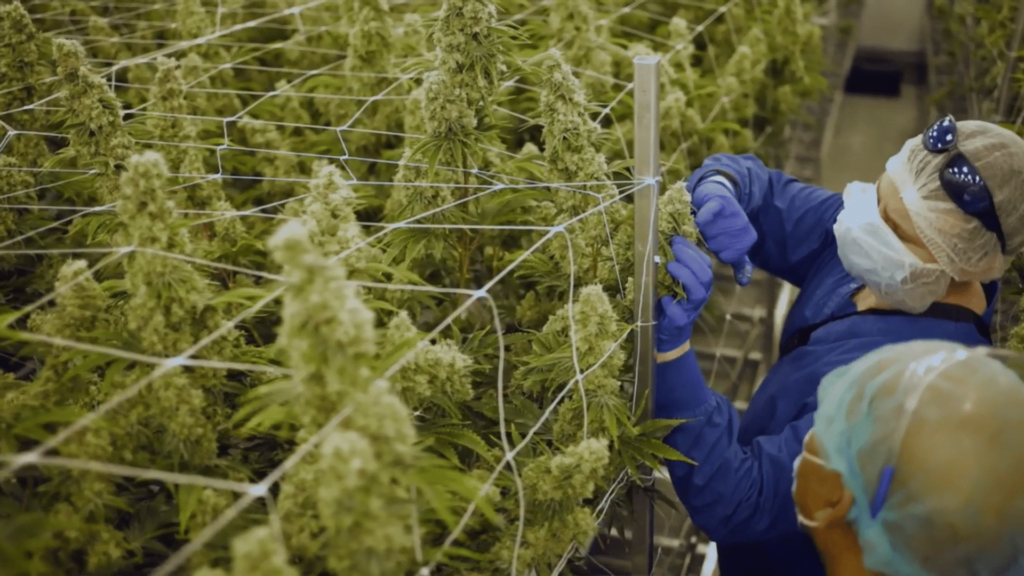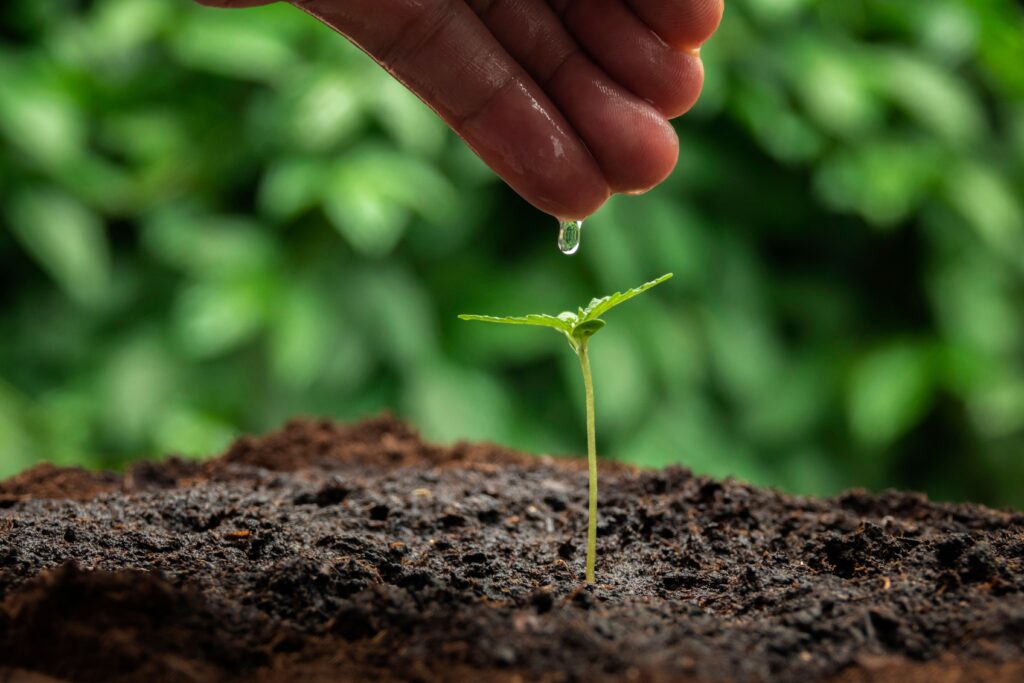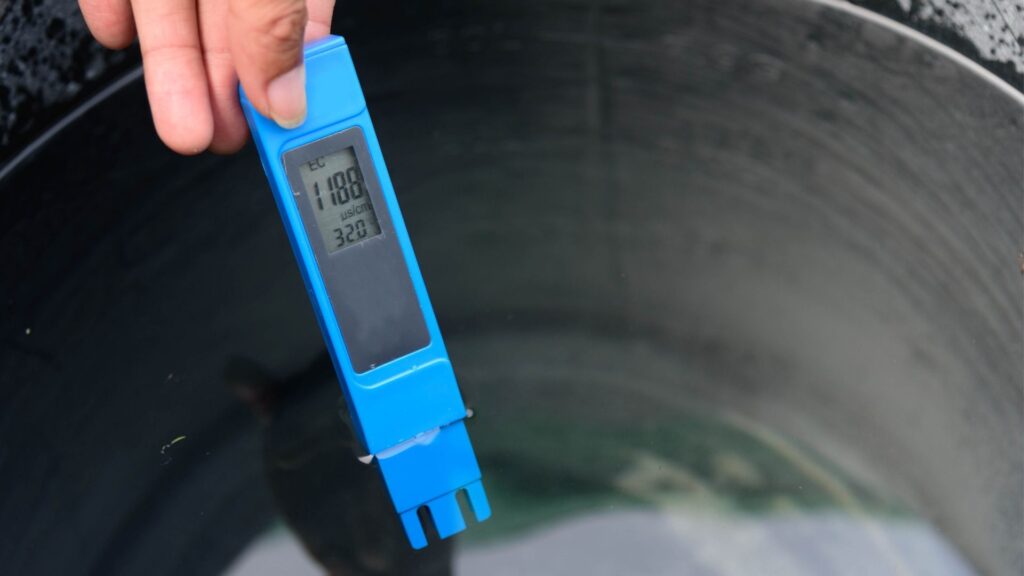5 Key Aspects of Integrated Root Management for Healthier Cannabis Plants & Bigger Yields
“When the roots are deep, there is no reason to fear the wind.”
—– African Proverb
There is a reason why proverbs about roots hit us deep most of the time. Roots play a major role in plant growth and survival. They are in direct contact with the soil, which contains water and nutrients that the plant uses to make sugars through photosynthesis. There is no other way that these photosynthetic factors can enter your plants than through a healthy set of roots. Thus, you need to know the key aspects of integrated root management for healthier cannabis plants and prioritize them and make sure they are given sufficient attention.
In their session at The Grower’s Source Expo, Patrick Scanlon, Head of Cultivation and Co-Founder @ CannTx Life Sciences Inc., Ari Singer, Sales Manager @ Dynomyco, and Alexandre Gauthier, Master Grower @ Origine Nature, emphasize the importance of an optimized rootzone in producing good quality, high-yielding cannabis plants.
They break down all the rules into five key aspects that you need to remember to maintain your rootzone – growing substrate, oxygen and gas levels, irrigation/fertigation, temperature, and microbial communities. We explain them further below.
1. Growing substrate and pot size

“This (growing substrate) is luckily one of those ones that we get the chance to make the choice.”
—– Patrick Scanlon, Head of Cultivation and Co-Founder @ CannTx Life Sciences Inc.
Make smart choices when it comes to your growing substrate. What you need to take into account when planning for your root home will include the (1) container size and (2) substrate porosity, water and air capacities, and density. The chemical properties, composition, pH, and influence on nutrient uptake and microbial growth of the substrate also matter.
Alchimia, a company in Spain, provides a comprehensive article about cannabis substrate requirements for good growth. One important factor to consider is how loose or compacted the medium is. Your medium should be able to let water pass but also hold it for your roots to absorb. Too much compaction can constrict your roots and eventually kill them. The type of substrate you use can also impact the oxygenation levels of the roots. Alchimia recommends coconut, vermiculite, perlite, and volcanic lava rocks for a stable pH and EC.
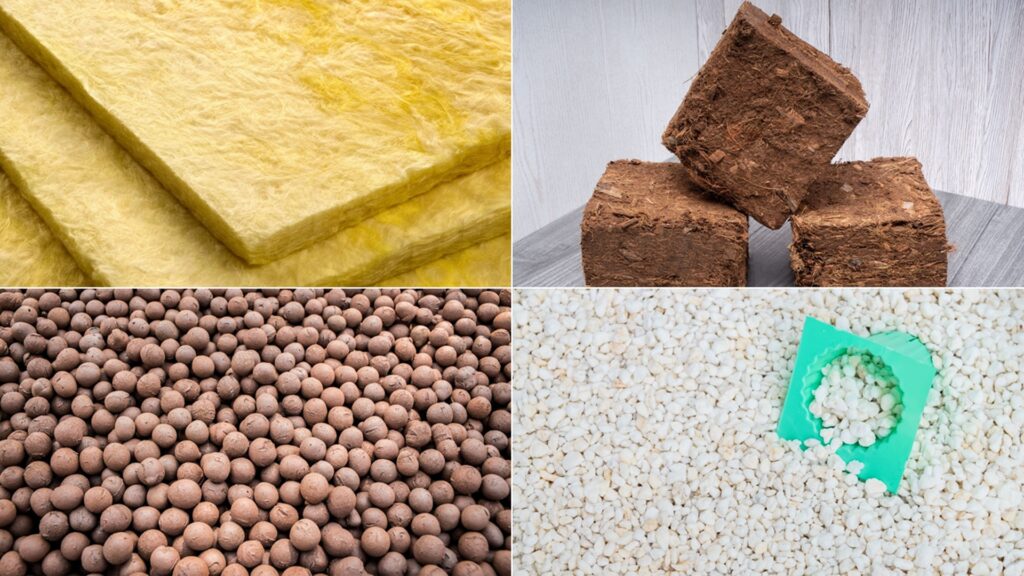
The substrate affects the watering habits you must have, the types of roots that you will get, and the adjustment of factors related to nutrient uptakes, like EC levels and photosynthetic factors. Coconut substrate will give you high porosity and will need relatively more frequent watering than soil. You will also get bigger roots and faster growth with coconut. Coco peat naturally contains the fungus Trichoderma, which prevents the growth of other harmful fungi and microorganisms. You can reuse the substrate in subsequent growing cycles, as well. Rockwool is a good substrate for hydroponics. It provides you with ease and clean handling. The first thing that you need to take care of in using Rockwool is the pH. Once pH is stabilized, Rockwool cubes can be used until the plant is big enough to transfer to Rockwool slabs. This substrate is non-reusable and should be disposed of properly. Clay pebbles are also recommended for use in hydroponics. As they are peanut-sized pebbles made of clay, they are able to absorb excess water and store it for later use. It prevents root rot through thorough aeration and prevention of fungi growth. Perlite is a baked volcanic rock that is mixed with soil. It provides better drainage capacity and aeration to the soil. These are just some of the substrates that you can use, as there is a wide range of substrates available in the market. CANNA specializes in product lines that match your choice of the substrate with the right nutrients and growing conditions. You can check out CANNA COCO, CANNA TERRA, and BIOCANNA (organic line) for more information. For a wider range of selections, check out Biofloral’s list of substrates available in the market.
Read more about photosynthesis and watering
Where you put your substrate is also important. Roots spread out in the soil or medium and grow towards where the moisture is. As the roots grow, the pot may be too small for them at a certain point. This would be the time to transfer your plant to a larger pot. Grow Diaries determines the best pot size for your specific plant development stage. For indoor cannabis growing, the average pot size is 2.5 gallons or 10 liters. The table below shows the average pot size and grow space for specific plant size.
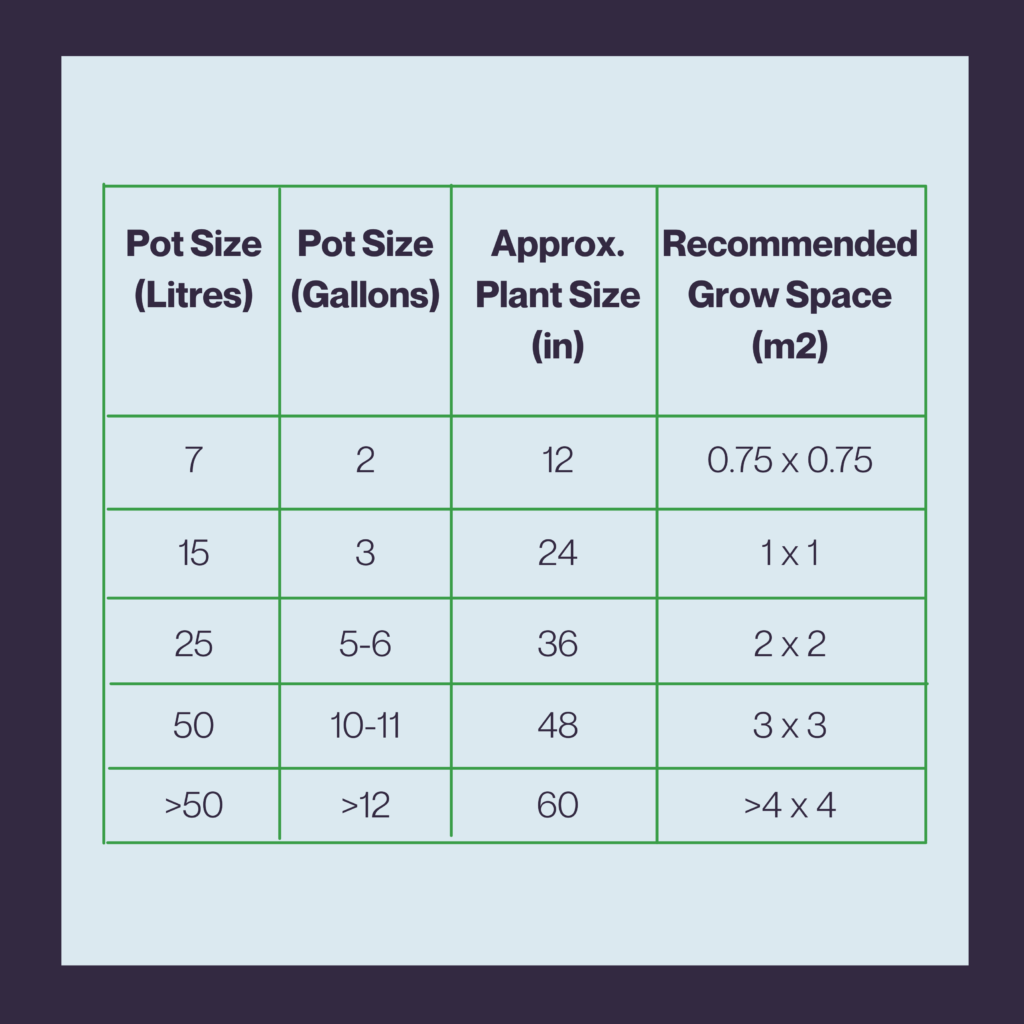
Besides the pot size, the type of material for pots that you use could also make a difference in your growing experience. Leafly enumerates different pot types that you can use for growing your plants in this article. Plastic containers are inexpensive with solid drainage. However, they are unable to protect the substrate from temperature fluctuations, lack durability in the long run, and may have issues with airflow depending on the substrate. Ceramic pots or terra cotta are perfect for tropical climates. They absorb water and help lower temperatures during hot days. Its weight also helps anchor bigger plants. On the downside, terra cotta’s drainage system is not that optimal, and its weight makes it difficult to transport your plants. A new type of pot is fabric pot, which provides denser root growth, increases airflow, and improves drainage. Its disadvantages include quick-drying and its lightweight, which can make plant support a challenge. You can explore wholesaler online catalogs to get a grasp on the variety of containers available from various brands such as these plastic pots offered by Biofloral.

How substrate use changed in Israel
While cannabis is yet to be approved for recreational use in Israel, it is legalized for research and medical use and is strictly regulated by the Israeli Medical Cannabis Agency (IMCA). The IMCA has provided standards for producing consistent quality cannabis for medical use including the one for growers in the IMC-GAP (Good Agricultural Practices). Ari tells how substrate use changed from growing on the ground with soil and peat to grow bags and pots only due to the regulatory standards. One dominating substrate company in the market is Pelemix. They provide coconut and organic-based materials such as peat and perlite.

2. Oxygen and other gases
Your roots need to breathe, and the oxygen levels that your roots can get in the soil could depend largely on the type of substrate you use. Your plants use oxygen for respiration, a process that results in the production of energy that your plants need to carry on with its daily processes. The proper amount of dissolved oxygen (DO) improves nutrient uptake and increases root mass. It also improves transpiration. If your plants do not get enough oxygen, the roots may rot or your plant can have a calcium deficiency. Pathogens that survive in oxygen-deprived soil can also attack and damage your plants. Your plants can get oxygen from the gas dissolved in the water in the substrate. You can measure the dissolved oxygen levels using DO meters that are available in the market. DO meters can detect 20 to 50 ppm of oxygen in the root zone. Dr. Charlie Hayes, a biochemist and expert in cultivation, says that the ideal DO in the root zone is 40-45 ppm. You can achieve this by bubbling or injecting air into the water. Hydrogen peroxide can also be used as a source of oxygen for the soil.
Patrick adds two other gases that should be monitored in the root zone: carbon dioxide and ethylene. Microorganisms can increase the temperature in the soil as they respire and produce carbon dioxide and energy. This can cause a rise in the number of pathogenic microorganisms in the soil, which can harm your plants. On the other hand, ethylene, which is produced by the plant, can also increase microbial growth and activity in the soil.
Alex shares his company’s practices when measuring gas levels in the soil. He shares that they measure the irrigation line beside the tank once a week at the least.

“We actually like to measure the entire line just to be sure that we have stable and consistent measures. If you’re just measuring that in your tank, you don’t know what’s happening in your entire irrigation line, maybe something could happen. And by the time you get to the actual drippers or flood tables or whatever system you’re using, so at the out of your fert, you could have different results.”
—– Alexandre Gauthier, Master Grower @ Origine Nature
3. One aspects of integrated root management for healthier cannabis plants, Irrigation/Fertigation
Irrigation (providing water) and fertigation (providing nutrients) are two things you as a grower may have confidence in monitoring. It is important to have a balanced amount of macro- and micronutrients in the soil, and the amount of nutrients your root absorbs can be affected by many factors like irrigation, light intensity, humidity, temperature, and pH level. The last factor serves as a validation factor for nutrients. It can be measured using soil tests or a pH meter. Patrick gives ammonia and nitrate as examples of nutrients that can raise or lower soil pH; ammonia can lower the pH, whereas nitrate can increase it. He emphasizes the importance of knowing the antagonistic or synergistic effects of the combination of specific nutrients in the root’s nutrient uptake.
How often you irrigate your plants and its duration matters greatly in the nutrition uptake of your plants. You can control and manipulate a lot during different stages of growth and by simply turning on and off of your lights. Alex shares that the first things that you need to know are the strain and phenotype of your plants and what medium they require. Your irrigation practices would be different when using coco compared with using rockwool for hydroponics.
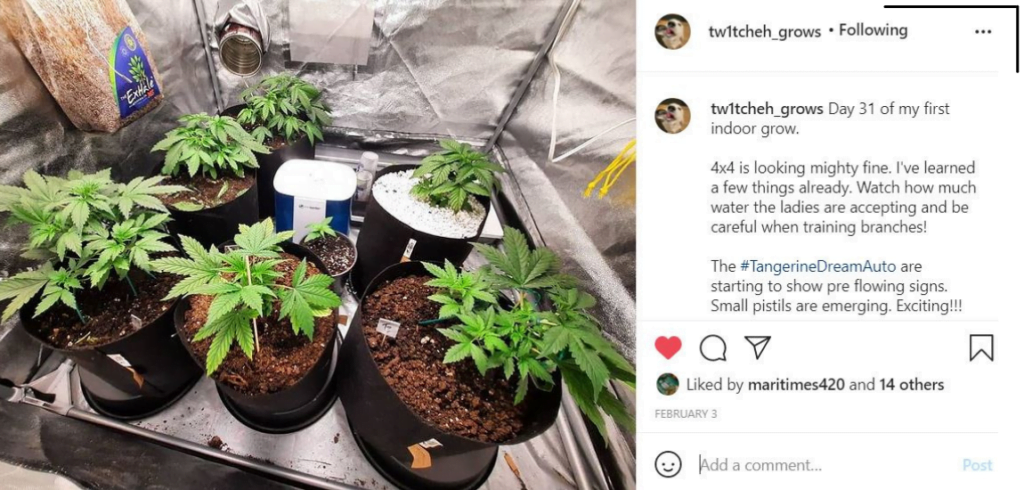
“You first need to build a strong knowledge of the genetics or the room or the irrigation system in itself before stopping to do some checks or trying to dial it in less.”
—– Alexandre Gauthier, Master Grower @ Origine Nature
Alex shares that he checks parameters almost daily so that he knows when and how often he should flush or dial in water and nutrients to his plants. The duration and amount of irrigation are important factors to take into account. It would also matter if you grow indoors or outdoors as this will affect light intensity, temperature, EC, and humidity. The entire environment around your plants can vary your irrigation and fertigation habits. Once you have created a baseline with daily monitoring, you can decrease the frequency of checking to once weekly in the long run.
4. Temperature
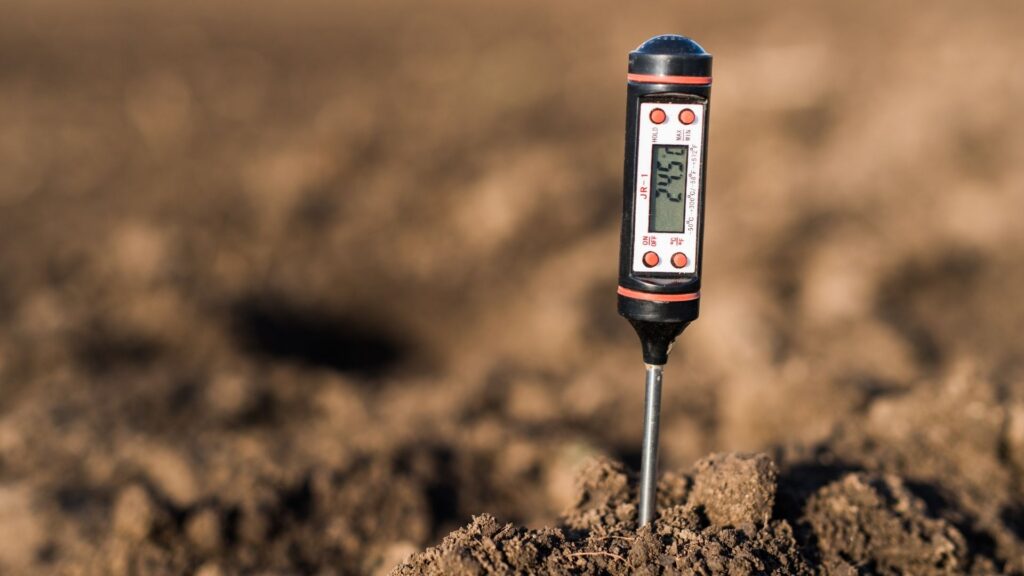
The temperature of the rootzone is critical as it can influence nutrient uptake, pH of the substrate, and microbial growth. Patrick shares that he prefers a warm root zone of 21-25°C. Nevertheless, he has seen successful gardens as low as 18-19°C. This variation is due to the differences in what is going on above the rootzone, and growth in the soil.
Ari shares the temperature requirement when you use mycorrhizae. For their ideal strain in DYNOMYCO, the temperature can be as high as 40-45°C, and the fungus would still thrive as the strain comes from the Judean desert in Israel. It can tolerate high temperatures, high salinity, droughts, and floods. However, research showed that the ideal temperature to increase mycorrhizal colonization is around 23.3°C. Nevertheless, you can still inoculate your plants at a lower or higher temperature.
5. Microbial Communities
Microbial communities are present everywhere, especially in the soil. Microorganisms are not all bad; mycorrhiza is an example of a beneficial one, and the key to healthy soil is to drive microbial growth towards beneficial microbes, or at least those that can make mutualistic relationships with the roots. Doing so will decrease the chance of pathogenic microbes to thrive as they must compete for nutrients with the others to do so.
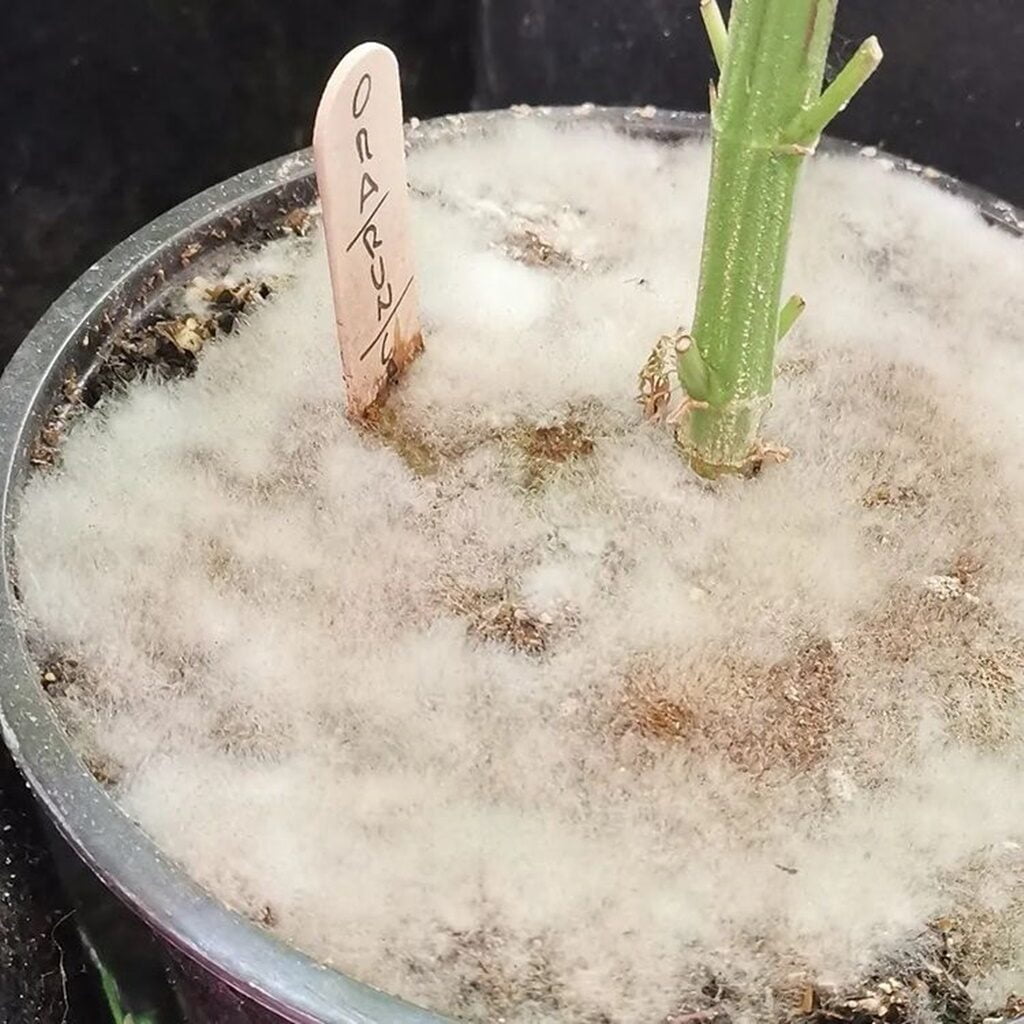
Important: Before using fungi, make sure you validate with Health Canada which fungi are authorized for the type of production and products you are producing.
Trichoderma is an example of a beneficial fungus that is also used as a fungicide. This type of fungus penetrates the roots and colonizes it. From the root, the fungus will branch out into the soil and absorb nutrients to deliver to the plant. In return, the plant gives the fungus sugars for its survival. The beneficial fungus can make your plants lusher with less yellowing.
Ari shares that Canadian regulations resulted in fewer approved rootzone fungi in the country than in the USA. That is because a lot of testing must be done first in order to determine which mycorrhizal fungi are appropriate for your plant. DYNOMYCO is specific to cannabis, and it has a high chance of not working in other crops like orchids or blueberries. Thus, you need to be very specific about which fungus you give your cannabis plants.
If there are beneficial microbes, there are also harmful ones. Physarum, a slime mold, and Pythium, a root parasite, are the most common pathogens challenging the cannabis industry. Almost all cannabis gardens encounter a Physarum problem in one way or another. Some viruses and fungi from other crops like peppers and cucumbers also find their way into cannabis through accidental inoculation. Ari says that one way that pathogenic microbes get the chance to attack your plants is when you have 100% sterile soil devoid of both beneficial and pathogenic microbes. It would be a competition between the two types, and most likely the pathogenic ones would be aggressive. This is the reason why beneficial fungi like DYNOMYCO’s products are important to have in the soil. When your soil is filled with beneficial microbes, the pathogens would not have a chance to invade your plants at all.
There is a lot to consider when you are managing your root zone, and all factors, including the type of substrate, pot size and type, gas levels, irrigation and fertigation practices, rootzone temperature, and microbial communities, are all contributors to the overall health of your plant. Healthy roots would lead to healthy shoots and flowers. Thus, you need to know aspects of integrated root management for healthier cannabis plants for your yield and income will also benefit you in the long run. Happy growing!
Watch this session at The Grower’s Source Expo here.
Featured Image Credits: Shutterstock Stock Photos

Want to keep the discussion going?
Log onto The Grower’s Source App to ask a question of our group of experts, or to read up on the latest comments on this topic.
You can also engage your fellow master and hobby growers about many other cannabis topics on your Grower’s Source App.

CONNECT
Connect and maintain relationships between you and other Canadian cannabis industry growers.
COLLABORATE
Overcome challenges together with your fellow growers, learn, develop collective knowledge and a global competitive edge.
GROW
Grow better, aim for sustainability, quality, and cost-effectiveness.




